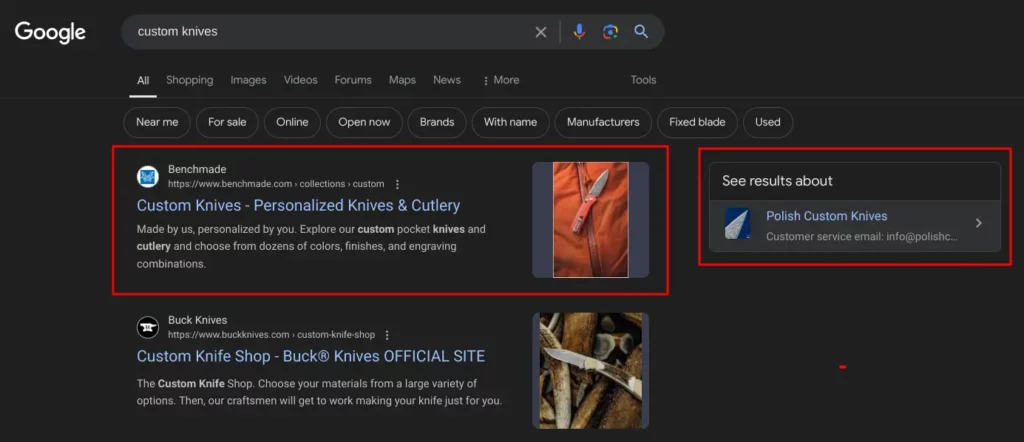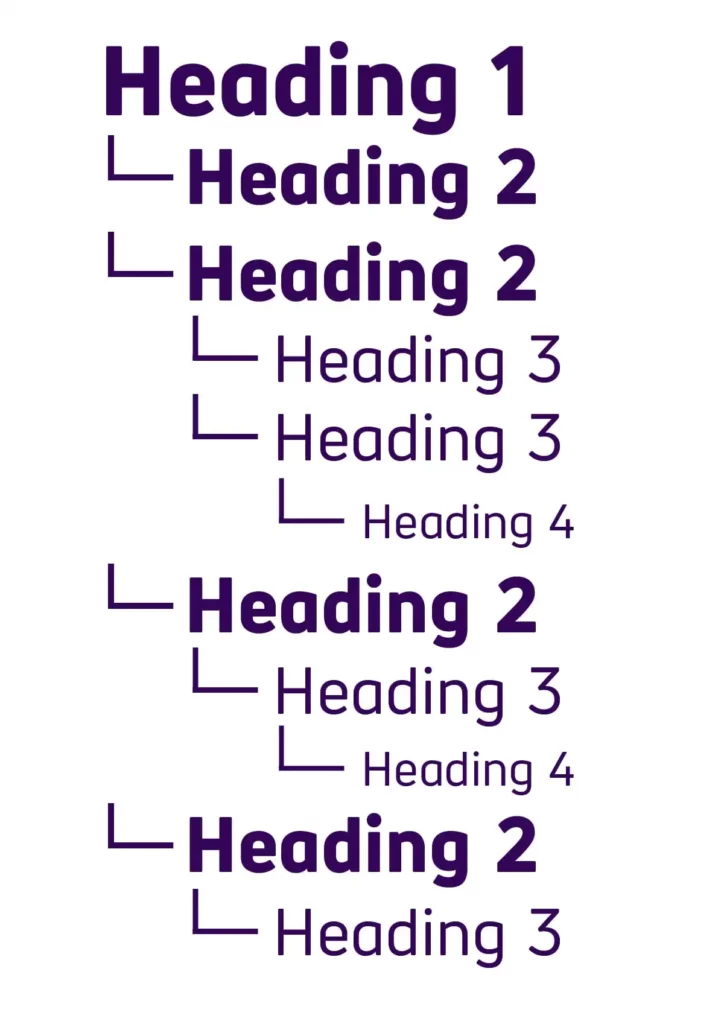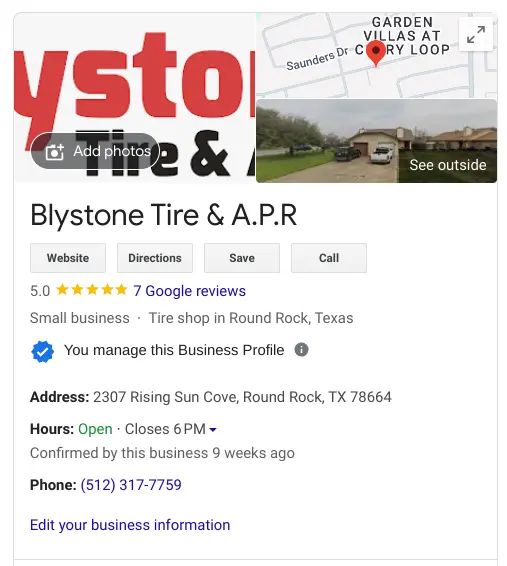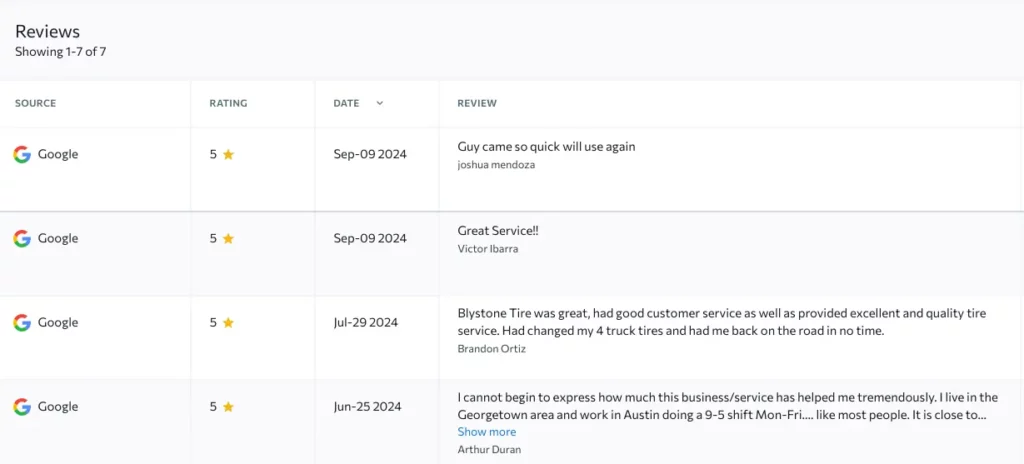The importance of SEO Services for small businesses
In today’s digital age, having a good online presence is imperative for the growth and success of any small business. SEO services for small business helps make sure that when any customer searches online for specific products or services, your business will pop up in the search results. From local SEO strategies to technical SEO optimizations, using social media for SEO-the ways are many by which SEO can benefit your small business. In this blog, we discuss reasons why your small business needs SEO and how implementation of proper strategies can help reach your target audience and boost your online visibility.
How SEO can improve your online visibility
SEO not only involves building and optimizing your website but also enhancing it in every possible way, for better ranking on search engine result pages. Better ranking of the web pages with target keywords, quality content, and earn reputed backlinks will result in more organic traffic to your small business. Also, by making it mobile-friendly and enabling it to load faster, you give users a better experience, hence improving your search engine ranking. This will make your small business stand out from all your rivals, gain an audience, and thus increase your online visibility and brand awareness through strategic SEO efforts.
Why you need to conduct an SEO Audit for your small business
A thorough SEO audit is one of the most important things a small business can do to improve its organic traffic and online visibility. Following are several reasons why it is going to pay very well to invest in an SEO audit:
1. Identifying Areas for Improvement
An SEO audit will carefully crawl through every aspect of your website, from structure to the quality of content, usage of keywords, and its backlink profile. From such an analysis, you are bound to find some very specific areas where your SEO strategy is not working as well as it should. You may find non-performing content, broken links, or haphazard keywords. Having them fixed could greatly better your website engine rankings.
2. Optimizing Website Performance
Of course, the website performance is very important with regard to user experience and SEO. An SEO audit may consider page load speed, mobile responsiveness, and the functioning of the site. Optimizing these elements means users enjoy a seamless experience that could reduce bounces and increase engagement levels. Such a well-functioning site would thus be more likely to be pushed up in the rankings by search engines like Google.
3. Enhancing Content Quality
The top-notch content ranks better. An audit analyzes relevance, originality, and effectiveness of the content. It may point to a gap where you need new content or show that you have content in place, which only needs revision to meet new SEO standards. Enhancement in the quality of content attracts not only more visitors but also invites valuable backlinks and social shares.
4. Evaluating Keyword Usage
The goal of keywords in SEO is to enable search engines to identify the relevance of your content to the search query. Keyword analysis, as part of an SEO audit, refers to the assessment regarding placement, density, and effectiveness of keywords used on-site. This helps you get your strategy right and ensures that your content really matches those terms and phrases your target audience is searching for to improve your search engine rankings.
5. Staying Ahead of Google Algorithm Changes
Search engines change their algorithms now and then to make the results better and more relevant for the users. The regular SEO audit helps you stay in contact with these updates and makes you able to adopt appropriate changes in your strategies. Since it will keep your website on par with the most recent best practices in SEO, you will avoid losing rank when the algorithm updates take place.
6. Addressing Technical Issues
It could also be impaired by technical SEO issues like crawl errors, duplication of content, and incorrect indexing of the site. These technical problems can easily be spotted through an SEO audit, hence allowing you to take immediate action. By fixing the technical issues on time, your website will be well crawled and indexed by the search engines, hence guaranteeing optimal visibility.
7. Making Data-Driven Decisions
An SEO audit brings rich insights through data analysis that will lead you toward more informed decisions regarding an SEO strategy. You understand what works and what doesn’t, allocating resources more correctly, prioritizing the most relevant activities for the best output, and implementing a more strategic way of improving your online presence.
8. Maximizing Long-Term Success
Invest in regular SEO audits to ensure long-term digital success. Ongoing website monitoring and optimization lay a solid foundation for continued growth: this proactive approach means you’ll be able to adapt to ever-changing market conditions, stay ahead of the competition, and enjoy long-lasting results.
After all, the SEO audit is that friendly tool which guides small businesses in improving their online presence. Thorough with how your website stands in every respect concerning SEO matters, actionable insights, and implementation strategies drive traffic, enhance user experience, and result in business growth.
The role of Technical SEO for your small business
In general, technical SEO is one of the important aspects of an overall digital strategy for a small business. Technical SEO covers the optimization of the technical features of your website for better visibility in search engines, among other improvements in its general performance. Following are five key ways in which technical SEO can help your small business:
1. Improved Search Engine Crawling and Indexing
Search engines rely on sophisticated algorithms to crawl and index websites. Technical SEO ensures that search engines can effectively navigate and understand your site’s content.
Benefits:
- Enhanced Visibility: Properly configured XML sitemaps and robots.txt files help search engines discover and index your pages, increasing the likelihood that your content will appear in search results.
- Efficient Crawling: Resolving crawl errors and optimizing site architecture streamline the crawling process, allowing search engines to more effectively assess and rank your content.

2. Faster Page Load Speeds
Site speed is a critical factor for both user experience and search engine rankings. Technical SEO practices aimed at optimizing page load times can significantly impact your website’s performance.
Benefits:
- Reduced Bounce Rates: Faster-loading pages provide a better user experience, leading to lower bounce rates and higher engagement.
- Higher Rankings: Search engines, such as Google, use page speed as a ranking factor. Improved load times can therefore contribute to better search engine rankings and visibility.
3. Enhanced Mobile Usability
With the growing prevalence of mobile device usage, having a mobile-responsive website is essential. Technical SEO ensures that your website provides a seamless experience across all devices.
Benefits:
- Increased Mobile Traffic: A mobile-friendly site attracts and retains mobile users, potentially increasing traffic and conversions from this segment.
- Mobile Search Rankings: Google’s mobile-first indexing prioritizes mobile-friendly websites in search results. Optimizing for mobile responsiveness helps improve rankings and visibility.

4. Structured Data and Rich Snippets
Structured data and schema markup help search engines understand the content and context of your website. This can enhance how your pages appear in search results through rich snippets.
Benefits:
- Improved Click-Through Rates: Rich snippets, such as star ratings and product details, make your search listings more attractive and informative, potentially leading to higher click-through rates.
- Better Visibility: Structured data can help your site stand out in search results, providing users with more information before they click on your link, which can lead to increased traffic.
5. Resolution of Technical Issues
Technical SEO involves identifying and resolving various issues that can affect your website’s performance, such as broken links, duplicate content, and security vulnerabilities.
Benefits:
- Enhanced User Experience: Fixing technical issues ensures that users have a smooth browsing experience, reducing frustration and improving overall satisfaction.
- Optimized Performance: Addressing problems like broken links and duplicate content prevents potential penalties from search engines and ensures that your site operates efficiently and effectively.
In short, technical SEO plays a crucial role in optimizing even the core of your website to make it more visible on search engines for better performance and user experience. Technical SEO Services for small businesses can improve the functionality of their sites through enhancing organic traffic to their websites and further ranking of their websites in search engines by focusing more on technical SEO.
The role of On-Page SEO for your small business
On-page optimization is important in enhancing your small business in the internet world. Paying attention to and optimizing individual web pages will go a long way in ensuring relevance, authority, and users’ experience of your site are highly improved. Following are some of the key ways on-page SEO can help your small business:
1. Enhanced Content Relevance and Quality
High-quality, keyword-rich content is fundamental to on-page SEO. Crafting content that addresses the needs and interests of your target audience can improve your website’s relevance to specific search queries.
Benefits:
- Improved Search Rankings: By incorporating relevant keywords and providing valuable information, your content is more likely to rank higher in search engine results pages (SERPs).
- Increased Engagement: Engaging and informative content keeps visitors on your site longer, reducing bounce rates and fostering higher levels of interaction.

2. Effective Use of Meta Tags
Meta tags, including title tags and meta descriptions, play a crucial role in how your pages are presented in search results and how users perceive them.
Benefits:
- Higher Click-Through Rates (CTR): Compelling and well-optimized title tags and meta descriptions can entice users to click on your search listings, leading to increased traffic.
- Better Search Visibility: Properly crafted meta tags improve your site’s visibility in search results by clearly conveying the page’s content and relevance.

3. Optimized Heading Structure
Headings (H1, H2, H3, etc.) help organize content and make it more readable for both users and search engines. An optimized heading structure enhances content hierarchy and clarity.
Benefits:
- Improved User Experience: A clear heading structure makes it easier for users to scan and understand your content, leading to a better overall experience.
- Enhanced SEO: Proper use of headings helps search engines understand the main topics and subtopics of your content, improving your site’s relevance for related search queries.
4. Strategic Internal Linking
Internal linking involves linking to other pages within your own website. This practice supports navigation and helps distribute page authority across your site.
Benefits:
- Improved Site Navigation: Effective internal linking makes it easier for users to find related content and navigate through your site, enhancing user experience.
- Increased Page Authority: By linking to other relevant pages, you can distribute page authority throughout your site, potentially boosting the SEO performance of linked pages.
5. Optimized Images and Media
Properly optimizing images and other media elements is a key aspect of on-page SEO. This includes using descriptive file names, alt text, and appropriate image sizes.
Benefits:
- Enhanced Accessibility: Alt text improves accessibility for users with visual impairments and ensures that search engines understand the content of your images.
- Faster Page Load Times: Optimized images and media contribute to faster page load times, which is important for both user experience and search engine rankings.
In the end, on-page SEO is a backbone to ensure maximum online visibility for your small business. Pay attention to great content quality, meta tags and headings, internal linking, and optimizing media, and watch your site become more relevant and authoritative. Meaning higher rankings, more organic traffic, and a generally improved user experience.
The role of Local SEO for your small business
Local SEO strategies are important for small businesses to be able to appear better in their local community and reach out to customers around. Here are five key points showing how much Local SEO will help your small business:

1. Optimized Google My Business (GMB) Profile
With Google My Business, one is able to manage how their business will turn out on Google such as Search and Maps. This involves optimizing a GMB profile so that business information is accurate and up-to-date.
Benefits:
- Increased Local Visibility: An optimized GMB profile helps your business appear in local search results and Google Maps, making it easier for potential customers to find you.
- Enhanced Engagement: Complete and accurate GMB profiles with photos, business hours, and contact information can encourage more interactions and inquiries from local customers.
2. Effective Use of Location-Specific Keywords
Incorporating location-specific keywords into your website’s content and meta tags helps search engines understand your business’s relevance to local searches.
Benefits:
- Improved Local Rankings: By using keywords related to your geographic area, you increase the likelihood of appearing in search results for queries with local intent, such as “best pizza in [City].”
- Targeted Traffic: Location-specific keywords attract users who are searching for products or services in your vicinity, leading to higher-quality leads and potential customers.

3. Positive Customer Reviews and Ratings
Customer reviews and ratings play a significant role in local SEO by influencing how your business is perceived by both search engines and potential customers.
Benefits:
- Enhanced Credibility: Positive reviews build trust and credibility, making your business more appealing to local searchers who rely on reviews to make purchasing decisions.
- Higher Local Search Rankings: Search engines consider the quantity and quality of reviews when ranking local search results. A strong review profile can improve your visibility in local search listings.
4. Consistent NAP (Name, Address, Phone Number) Information
Consistency of NAP information across online directories and platforms is vital for local SEO. Discrepancies can confuse search engines and customers, affecting your local search rankings.
Benefits:
- Improved Search Accuracy: Consistent NAP information helps search engines verify the legitimacy of your business and improve its ranking in local search results.
- Enhanced Local Trust: Accurate and uniform business information across various directories ensures that customers can easily contact and locate your business.
5. Creation of Location-Specific Landing Pages
Location-specific landing pages are designed to target users in specific geographic areas by providing tailored content relevant to those locations.
Benefits:
- Localized Content: These pages address the needs and interests of users in different areas, which can enhance user engagement and relevance for local search queries.
- Increased Local Traffic: By targeting multiple locations with dedicated landing pages, you can attract more local traffic and improve your business’s visibility in different geographic regions.
Local SEO, therefore, is one such methodology that helps small businesses return more specific local results and appeal to customers locally. If you want to see your business appear more locally relevant, then optimize for your Google My Business profile by using keywords based on locations, encouraging positive reviews, maintaining consistent NAP data, and creating geo-specific landing pages.
The role of National SEO for your small business
National SEO is a strategic approach designed to enhance a small business’s visibility across a broader geographical area, extending beyond local or regional markets to reach potential customers nationwide. Here are five key points that illustrate how National SEO can significantly benefit your small business:

1. Broader Keyword Targeting
National SEO involves optimizing your website for broader, high-volume keywords that are relevant across the entire country, rather than just local terms.
Benefits:
- Increased Reach: By targeting national keywords, your business can attract a larger audience and increase your visibility in search results across various regions.
- Higher Traffic Potential: Broader keywords often have higher search volumes, which can lead to a substantial increase in website traffic if your site ranks well for these terms.
2. Enhanced Content Quality and Strategy
Creating high-quality, engaging content that addresses the needs and interests of a national audience is crucial for National SEO.
Benefits:
- Greater Authority: Well-researched and comprehensive content helps establish your business as an authority in your field, which can improve your rankings and attract a national audience.
- Increased Engagement: Valuable content encourages more visitors to spend time on your site, share your content, and return for future visits, all of which contribute to better SEO performance.
3. Building Authoritative Backlinks
Authoritative backlinks from reputable and relevant sites are a critical component of National SEO. They signal to search engines that your website is trustworthy and valuable. Alongside building trustworthiness, over time backlinks can serve as an additional source of traffic in the long-run.
Benefits:
- Improved Domain Authority: High-quality backlinks from authoritative sources enhance your site’s domain authority, which can boost your rankings for national keywords.
- Broader Exposure: Backlinks from well-regarded national sites increase your visibility and credibility across a wider audience, contributing to greater brand recognition.
4. Mobile Optimization
As mobile usage continues to rise, optimizing your website for mobile devices is essential for National SEO. A mobile-friendly site ensures a seamless user experience across various devices.
Benefits:
- Enhanced User Experience: A responsive, mobile-optimized site improves usability for visitors accessing your site from smartphones and tablets, leading to higher engagement and lower bounce rates.
- Higher Search Rankings: Search engines prioritize mobile-friendly sites in their rankings, so optimizing for mobile can improve your site’s visibility in national search results.
5. Scalability and National Presence
National SEO strategies are designed to scale your online presence across the country, enabling your business to reach a diverse and extensive audience.
Benefits:
- Wider Market Reach: By implementing National SEO, your business can tap into markets beyond your local area, reaching potential customers in various regions and states.
- Increased Brand Awareness: A strong national presence helps build brand recognition and credibility on a larger scale, positioning your business as a significant player in your industry.
National SEO offers substantial benefits for small businesses looking to expand their reach and enhance their visibility across the country. By focusing on broader keyword targeting, producing high-quality content, building authoritative backlinks, optimizing for mobile users, and scaling your national presence, you can effectively attract a larger audience and grow your business beyond local boundaries.
The role of Social Media SEO for your small business
Social media SEO is becoming increasingly important in amplifying the presence of a small business on the web. While integrating social media efforts along with an SEO strategy can cater to a wider audience and help create traffic towards your website, thereby enhancing the results of a search engine. Here are five key points that describe how Social Media SEO benefits a small business tremendously:
1. Enhanced Website Traffic
Social media platforms provide valuable channels for driving traffic to your website, which can contribute to improved search engine rankings.
Benefits:
- Increased Referral Traffic: By sharing links to your website’s content on social media, you can attract users to visit your site, potentially increasing engagement and conversion rates.
- Higher Visibility: Regularly posting and promoting content through social media helps maintain consistent traffic flow, which can positively influence search engine algorithms that favor sites with steady traffic.
2. Strengthened Social Signals
Social signals, such as likes, shares, comments, and overall engagement on social media, can indirectly impact your search engine rankings.
Benefits:
- Improved Search Rankings: While social signals themselves are not a direct ranking factor for search engines, high levels of engagement can indicate to search engines that your content is valuable and relevant, potentially boosting your rankings.
- Increased Credibility: Positive social interactions and high engagement can enhance your business’s credibility and authority in your industry, which can also be reflected in search engine results.
3. Creation of Shareable Content
Crafting content that resonates with your audience and encourages sharing is a key component of Social Media SEO. Shareable content amplifies your reach and visibility.
Benefits:
- Broader Reach: Content that is widely shared on social media platforms extends your reach beyond your immediate followers, exposing your brand to new audiences.
- Enhanced Brand Visibility: Shareable content contributes to increased brand awareness and can drive more traffic to your website, improving your overall online presence.
4. Fostering Customer Relationships
Engaging with customers through social media interactions helps build relationships and loyalty, which can positively impact your brand’s online reputation and SEO.
Benefits:
- Increased Engagement: Direct interactions with customers through comments, messages, and reviews enhance engagement and provide valuable feedback.
- Strengthened Brand Loyalty: Building strong relationships with your audience fosters loyalty and encourages repeat visits, which can lead to higher levels of traffic and positive user behavior signals.
5. Improved Content Discovery
Social media platforms can serve as powerful discovery tools, helping users find and engage with your content more easily.
Benefits:
- Higher Content Visibility: Promoting your content on social media increases its visibility and accessibility, making it easier for users to discover and share.
- Enhanced SEO Benefits: Increased content discovery and sharing can lead to more backlinks and mentions across the web, contributing to better search engine rankings and enhanced SEO performance.
In short, Social Media SEO is not something very complicated to improve the presence of a small business online. You drive website traffic by leveraging social signals to create shareable content, foster customer relationships, and help improve content discovery-this is how you properly integrate social media with SEO. This holistic approach enables your website to reach higher ranks within the search engines, letting you reach more and interact better with a wider audience for the good and growth of your business in the digital economy.
Optimizing your website for search engines
Besides this, the optimization of your small business website in search engines will be really effectual for getting more online visibility, drawing a number of customers toward your services. SEO techniques on the page, like the optimization of meta tags, headers, and internal linking structure, improve the rankings of your website in search results. Website speed, mobile responsiveness, and user experience are some of the other factors that will provide benefits not only from an SEO perspective but also from the overall customer experience. Be ahead of your competition; focus your attention on ensuring that your small business is discoverable and accessible to your target audience.
Monitoring and measuring the success of your SEO efforts
Monitoring your SEO performance will enable you to understand the effect your strategies are having. Analytical tools will be able to help keep tabs on the flow of traffic, keyword rankings, and even conversions. This allows you, on a regular basis, to make decisions based on real data and fine-tune optimization tactics. You’ll know what works for you and what doesn’t need to change so you can keep optimizing your SEO strategy for better results.
Conclusion: Investing in SEO for long-term growth of your small business
Having a proper SEO strategy is very important in today’s era because, for your small business, this ensures the establishment and continuity of your online presence. One does that by consistently monitoring performance to make data-driven decisions to further improve visibility and help attract more prospects. In the next few blog posts, we will go into great detail through some advanced SEO techniques and best practices so you can further optimize your online presence. Keep in mind that SEO is not only about great rankings but also credibility, trust, and long-term growth for a small business. Alternatively, if all of these solutions feel overwhelming and a large learning curve, consider hiring SEO services from agencies that cater to small businesses – like RankRocket!










